It's So Logical: Why and How We Turn Dollhouse MFD Floors into Gorgeous Hardwood
So check out our homeschool lesson for today: logical syllogisms. There are NO fallacies in the following. None. I swear.
P1 Dollhouse floors - all dollhouse pieces, actually - come out of the box as bare, manufactured wood.
P2 Real houses have real floors.
P3 Really awesome houses have hardwood floors.
C1 If we want a really awesome dollhouse then it must have hardwood floors and not dumb manufactured wood floors.
It might seem odd to be thinking of finished floors before the dollhouse assembly is begun, but trust me, once walls are in, the technique below would not be possible. And since the result is so thoroughly awesome, well, it's worth the delayed gratification. Incidentally, I found this technique on
and buried in links on the
. Since the video is longish and the process is so involved, I'll share my tutorial below. Yes, I'm thoughtful like that. You're welcome.
1. Make a template on card stock or paper. The video suggested random-width flooring between 1/4 inch and 3/4 inch. At first I thought, "But floors aren't random width!" and then I thought, "Any little irregularity will be so obvious," so I decided, "Yes, random width it is!" I kept mine, for the main floor, closer to 1/2 inch, give or take.
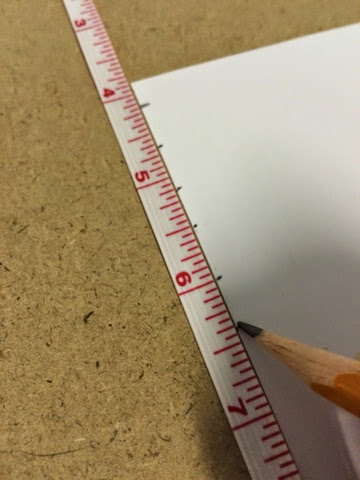
2. Transfer marks to the floor. DO NOT FORGET the access bay floor! Wouldn't it suck to spend all this time making the floor awesome only to open the access bay and see ... blech, manufactured wood. Puke. I'd have to drag all my paints out again and halt production just for those tiny strips of wood. Which would suck. So DON'T FORGET! Seriously. Don't.
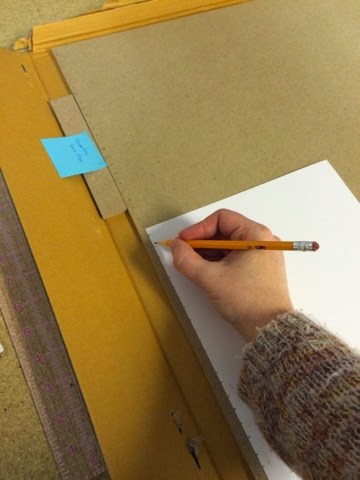
3. Now's the fun part. Connect the dots. Use a straight-edge that is long enough to span the entire floor. Hold it down really really really tightly, and/or put double-sided tape on the back to help it stay put. I didn't bother with tape because I am just that strong, baby. Use the side of a flathead screwdriver, or an awl. But be careful because awls are awlfully dangerous. Hahaha.
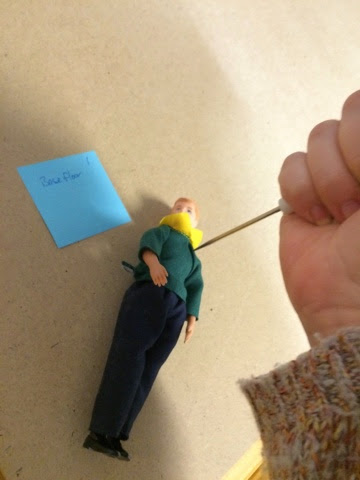
See here, I'm dragging the awl across the board against the straight edge (a level, in my case). Do one pass somewhat lightly, but don't be afraid to really lean into it after that. Give it power. Muscle. Make those spaghetti arms burn! The groove should be deep enough to guide a folded sheet of sandpaper. I found six heavy passes did great. A stronger, burlier person might do fine with four.

4. Sand the whole thing with 60-80 grit sandpaper. In the direction of the grain (the boards, since MFD has no grain. Duh.). Again, don't forget that pesky access bay floor!!! The goal here is to smooth out the surface and rough it up a bit to give the finished floor more texture.

5. With a finer-grit sandpaper that's folded, sand the grooves. This is painstakingly slow, tedious, boring, but is one of the most important steps.
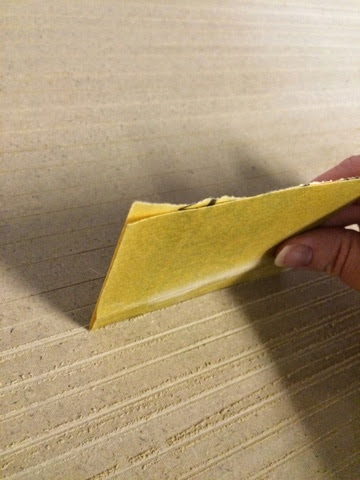
6. Here you see Mud Pie cleaning out the grooves with a stiff kitchen brush. Not shown is me doing it again and then vacuuming up the dust. Because there's quite a lot of dust. Tip: Keep the door to your workroom closed or you will find dusty cat prints all over your house.

7 maybe? I forget. Gather acrylic paints as desired. Use just one color, cream for a more subtle base, or yellow for warmth. I added a bit of red for variation because I dig variation, and heaven forbid I ever follow instructions exactly. I was a little worried I'd screw it up, but kept that thought to myself. Mud Pie, however, was more than a little skeptical. She's seen enough of my projects, however, to know she can trust me (or so she said. She later confessed that she was knotted up with worry that it would look awful. So was I.).
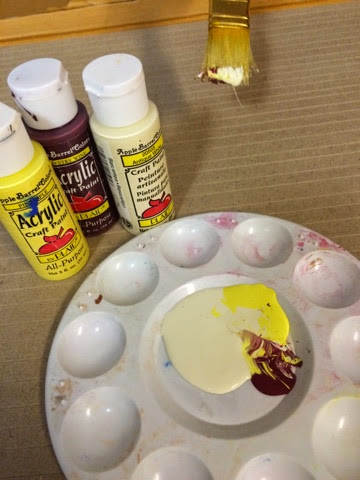
8. Working very fast, brush on the paint, working in sections if it's a large area, and wipe almost all the paint off with a paper towel. Or several paper towels.

9. Before the paint is fully dry, clean out the grooves with the awl.
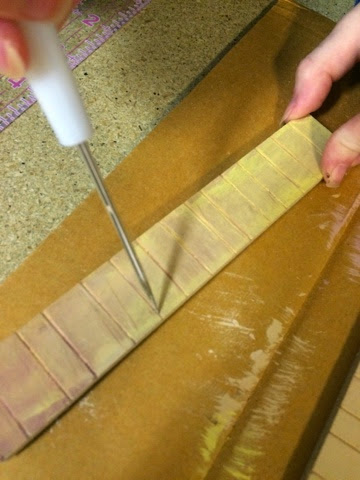
10. Once dry, sand with coarse sandpaper once more. If needed, run a piece of sandpaper down the grooves again.
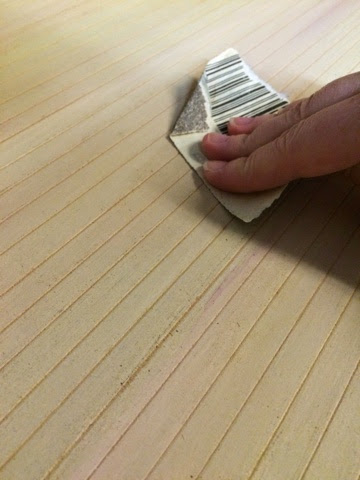
11. And clean thoroughly again. Notice the variations from cream to pink to yellow. At this point I'm wondering if I made a very large mistake.
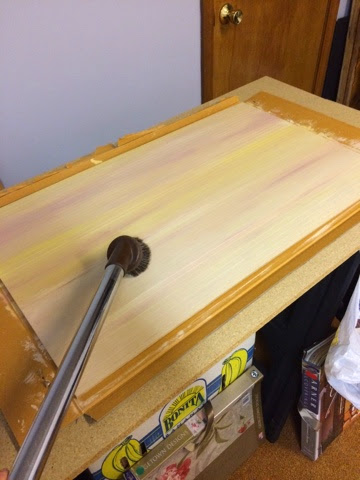
12. And now the fun part. Or the *next* fun part since I already had a fun part. Squirt your Minwax Express (find it online or at Home Depot) non-penetrating stain on your clean, sanded, painted floor and spread it around quickly, making sure to flood the grooves. I did not work in sections, but I wish I had because this stuff dries fairly fast. Using a paper towel, wipe in the direction of the grain, back and forth, in large, sweeping motions. Try not to wipe at an angle. P.s. Wearing a mismatched sweater/tunic combo is an essential element. I don't know why it wasn't mentioned in the video.

At first you'll be removing a lot of the stain, which is ok. Continue as the surface dries. Back and forth, back and forth, touching the surface more lightly each time.
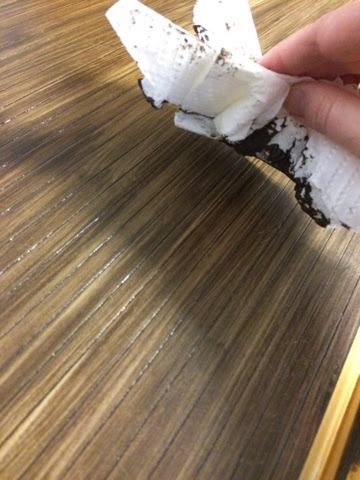
The variation is quite pretty, and startlingly authentic. Here it is still wet as I'm wiping, wiping wiping. Keep at it until it dries (about 10 minutes).

Finally: Allow to dry for at least three hours, then coat with Minwax polycrylic (a non-yellowing alternative to polyurethane). And enjoy the payoff! A stunning hardwood floor that will run through your yet-to-be-built dollhouse. We can still lay tile in kitchens or baths, install carpet, or do whatever we'd like. But we won't have to for the dollhouse to look awesome. Who knows, maybe all Mud Pie will want to do is throw down some rugs?

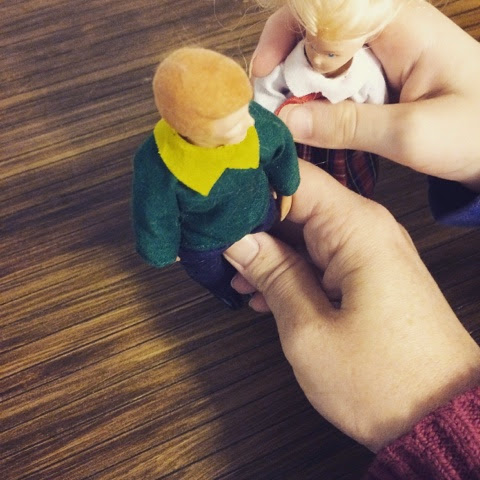
For the rest of my posts about creating Victoria's Dollhouse, click on the Childhood Reclamation Project label below this post.


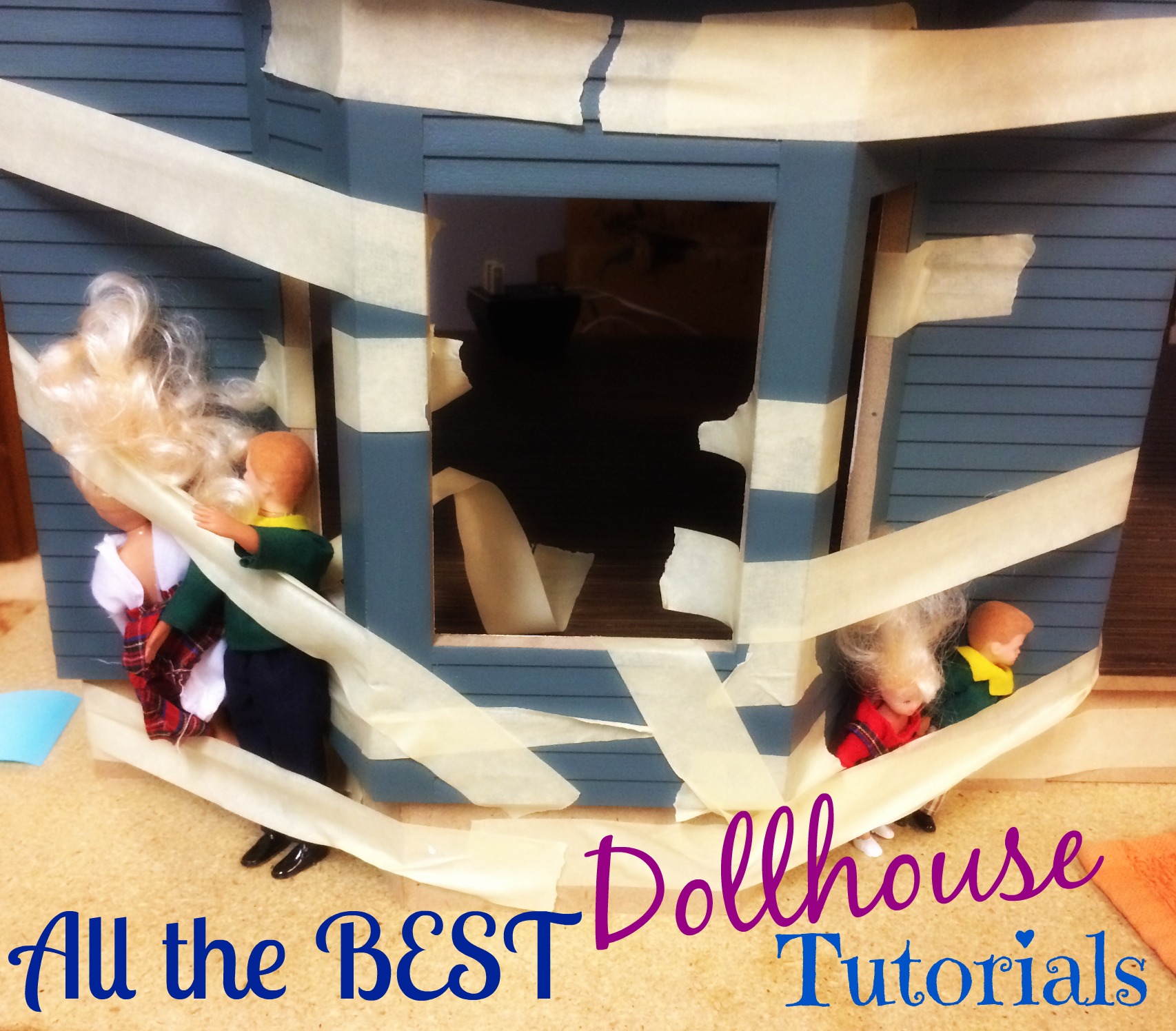
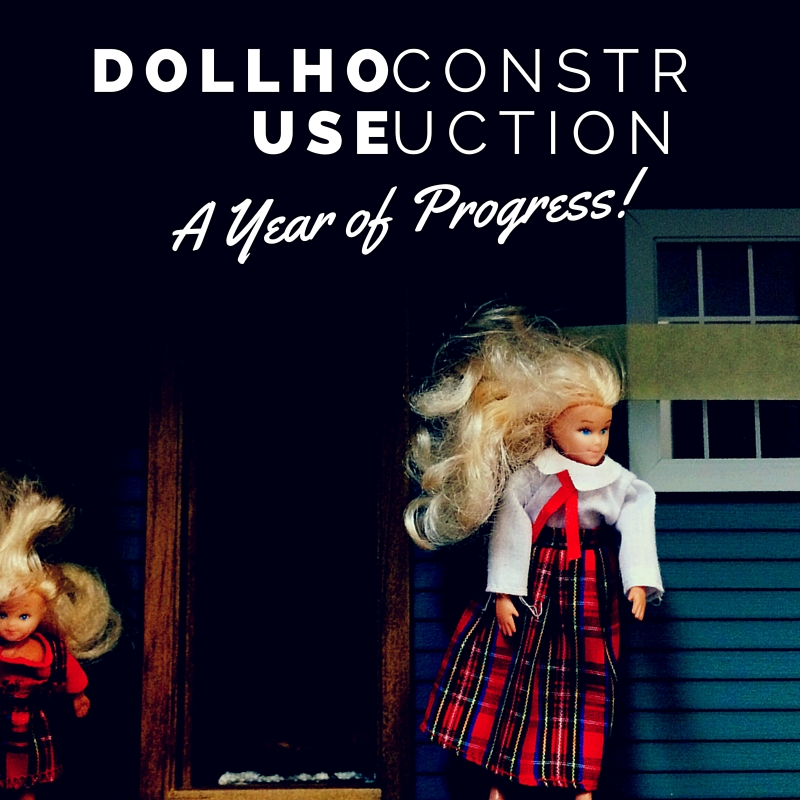





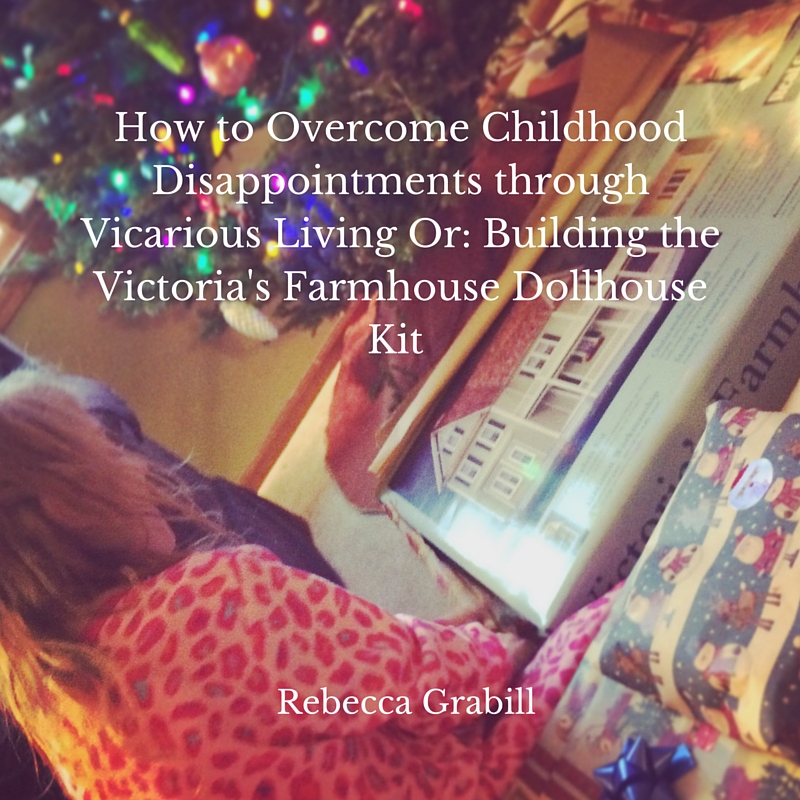

Another year, another huge leap forward on Victoria's Dollhouse! Um. Not really. Maggie and I joke that since the box said, "Ages 13 and up" we shouldn't finish it until she's thirteen. She's eleven. We're right on track!